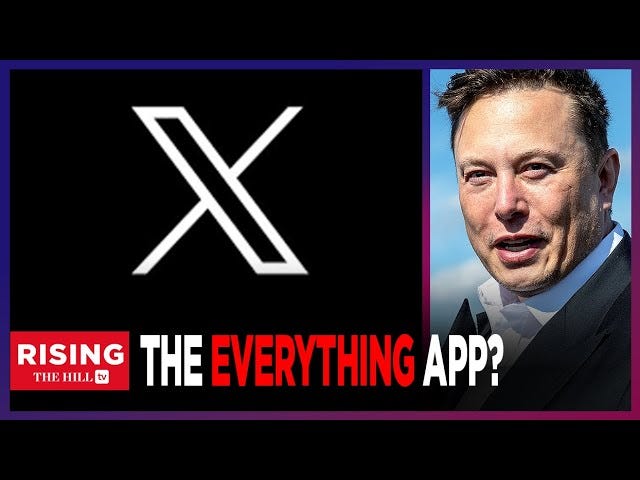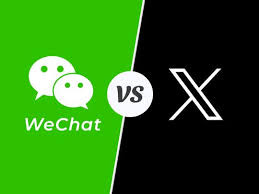Elon Musk is the latest tech luminary to renew a decades long quest for “The Everything App” in America. He’s been talking and dreaming about this in his own words since the 1990s, when his first aspirations for ‘x.com’ back then. That turned into the multi-billion payment behemoth Paypal, with tech luminaries like Peter Thiel, Max Levchin et al. As the NY Times described it yesterday:
“Mr. Musk, the owner of Twitter, is the latest Silicon Valley mogul to pursue an all-in-one app, the kind that has thrived in Asia but not elsewhere.”
“Four years ago, a billionaire tech executive leading one of the world’s pre-eminent social platforms laid out a vision to transform it into an app that could do it all. In an online manifesto, he wrote that the app would not only be central to written communications but have audio, video, payments, commerce and more.”
“The idea was akin to that of an “everything app” espoused recently by Elon Musk, the owner of Twitter. But the dream belonged to Mark Zuckerberg, the founder and chief executive of Meta, which owns Facebook, Instagram and WhatsApp. In a 2019 blog post, Mr. Zuckerberg outlined how he would turn WhatsApp into an app that could be a platform for many “kinds of private services.”
“In Silicon Valley, the pursuit of an everything app has come up time and again as tech leaders have strained to expand their digital empires. Mr. Zuckerberg tried it. So did Dara Khosrowshahi, the chief executive of Uber. Evan Spiegel, the head of Snap, said he wanted to go for it, too.”
“Yet those efforts fell short, with the tech executives unable to replicate the magic that has abounded in Asia with “super apps” like China’s WeChat, Japan’s Line and South Korea’s KakaoTalk. U.S. tech giants have instead run into cultural differences, regulatory scrutiny and a splintered financial system that has made the quest to build such apps more difficult.”
And now the quest is resumed in earnest by Elon Musk, AI and all:
“Mr. Musk, who this week changed Twitter’s name to X, the moniker for his everything app, is chasing the same goal — and is likely to face the same challenges.”
“On Monday, he tweeted about Twitter’s rebranding to X, writing: “In the months to come, we will add comprehensive communications and the ability to conduct your entire financial world. The Twitter name does not make sense in that context, so we must bid adieu to the bird.”
And as I said a few days ago, there are a number of reasons why this quest may fare better with Mr. Musk at the helm, not the least of it being his ability to make the implausible plausible despite the odds,
The current inspiration of “an Everything App” stems from the idea having worked in Asia, for a variety of reasons including the ability of some of the biggest successes there:
“Much of the desire to create an everything app is rooted in Asia, where such apps have flourished for more than a decade. In Japan, people use Line, the country’s dominant messaging platform, to store vaccination cards and shop for clothes. In South Korea, people turn to KakaoTalk, which started as a messaging service, to send money and request taxi rides.”
“None have been as successful as Tencent’s WeChat, a messaging, social media and payments app used by more than one billion people, mostly in China. WeChat dominates the mobile internet and is a one-stop shop to read news, talk with friends, order pizza or pay the landlord.”
It’s notable that Tencent’s WeChat in China was able to leap-frog the incumbent technologies, infrastructure, and regulatory realities that exist in the US and Europe around technology driven financial services apps.
That’s at the heart of how Elon Musk sees the opportunity, be it a from the ground up service, or something built around what was Twitter, as this piece by the Verge explains:
“Musk has also been open about his vision for making X a place where money flows. At his first meeting with company employees after officially taking ownership of Twitter, for example, Musk said there was a “transformative opportunity in payments.”
“From an information standpoint, not a huge difference between, say, just sending a direct message and sending a payment,” he said. “They are basically the same thing. In principle, you can use a direct messaging stack for payments. And so that’s definitely a direction we’re going to go in, enabling people on Twitter to be able to send money anywhere in the world instantly and in real time.” Later, he described some ideas that sounded an awful lot like making Twitter a bank.”
And the headwinds are different here vs Asia:
“But a WeChat-style super app might not be possible for X. Regulators are keeping a much closer eye on social media and technology companies than they used to, so they might step in to prevent any one app from owning too much of your experience on the internet. And it might just be hard to get people to switch over to X for things like grocery shopping or banking because there are a lot of popular incumbents at this point.”
Also, we may forget that the vision to enable payments (and/or micropayments) was once a wish list for the very fabric of the internet from its earliest days:
“We all know HTTP Error 404 – the standard browser response when a file cannot be found. But have you heard of Error 402 – Payment Required? Built into every Mozilla-based browser, it is an archaeological artifact of the internet we might have had: browser-based micropayments.”
“Many of the early networking and internet pioneers, from HTTP creator Tim Berners-Lee to Netscape founder Marc Andreessen, assumed micropayments would be woven into the fabric of the web. In fact the term “micropayments” goes back before the birth of the World Wide Web, to network pioneer Ted Nelson, who saw micropayments as intrinsic to hypertext and associated copyright issues. In 1989, three decades after Nelson coined the term, Berners-Lee wrote the 402 “payment required” code into HTTP.”
“Despite the powerful intuition that millions, if not billions, of consumers would value interactions with the web in small bites, the vision of paying for content à la carte still has not materialized. What happened? The failure lies not in lack of demand, nor lack of creator supply, but in the limitations of the payments industry.”
“Banking was not built for the web”
“Working with the existing financial infrastructure made the task “impossible”, Netscape’s Andreessen has said. “We tried. We talked to credit card companies, banks, but we weren't able to [take payments]. Microsoft wasn’t able to do it.”
The impediments then, still with us today, are the incumbent payment models being too tough to dent with these more efficient ways of processing payments. Even Apple, Stripe, and dozens of global technology companies have had to modify their plans to work with and not against the way the financial industry does payments today.
And in terms of expanding beyond payments into banking and other financial services like Elon is currently talking about, note that even Apple and Goldman Sachs have had a rocky road on that front, despite years of investing billions together, to make it happen.
For a while, Bitcoin and Crypto potentially was a way into these tough waters, but that too has come not to pass:
“When Bitcoin first gained prominence, industry insiders including Andreessen predicted its divisibility could make it ideally suited to small transactions. That was in 2014. He could not have predicted that by 2021, Bitcoin’s transaction fees would sometimes dwarf those of the major payment networks. In addition, with the average confirmation time for a Bitcoin transaction currently measured in minutes, it has not become the seamlessly reliable vehicle for payments that early proponents predicted. In response, other blockchain-based approaches to micropayments are now emerging.”
But they too are in early days, and the road ahead even with those approaches is not yet clear. AI driven smart agents may be another possible way to crack the payments nut, but that too some distance away into the future. Elon Musk is going to take a stab at it though. And the dream for an “Everything App” driven by payments lives on again. He may have to drive over Twitter to get to where X marks the spot. Stay tuned.






